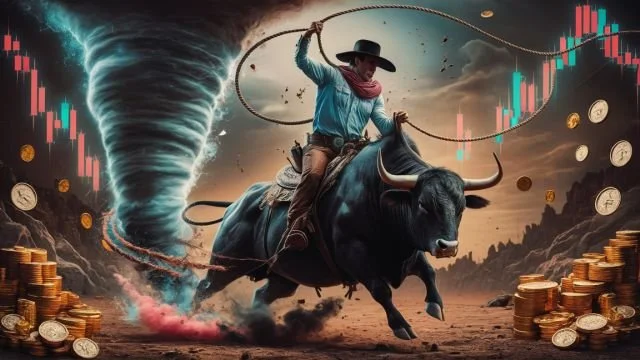Strategizing Market Drawdowns
By Mark Lyman - Book a Demo!
Don't like reading? Watch the YouTube video!
Most years still end with a gain.
If you look at stock market data since 1980, you’ll see a clear pattern: drawdowns happen almost every year, and yet, most years still end with a gain.
The white space represents the largest drawdown during that year and the blue represents the overall return that same year.
As you can see from the image, every single year since 1980 had a market pullback — on average, about 13% down. And in years when the S&P 500 had a double-digit decline, 14 out of 22 times (that’s 64% of the time) the year still finished positive.
Going into a Controlled Slide
So if drawdowns are common, then you should have a strategy that accounts for them!
The Architect in The Matrix said it best:
“While it remains a burden assiduously avoided, it is not unexpected, and thus not beyond a measure of control”.
So how do we exert "a measure of control" on market drawdowns?
Here are three approaches:
Pull cash out of the market to reduce exposure to the drawdown.
Invest in index funds and ride out the storm, believing that recovery eventually comes.
Add more cash during drawdowns to average down your position and speed up recovery.
So... is there a strategy that combines all three?
Yes. It’s called Quantelligent, and it’s fully explained on our website: Quantelligent.com.
In 2024, LymanWealth customers achieved a 65% average return† using the Quantelligent strategy. Anyone (not just our customers) is welcome to study it and use it to their own advantage.
† For all investors who joined prior to 2024
LymanWealth's Quantelligent Algorithm: A quick explanation
Invest incrementally on a daily basis. This helps us take advantage of price dips to average down our position.
Identify daily profit targets and sell the excess. These incremental sells lock in gains, reduce exposure, and allow us to re-invest the profits to fuel compound growth.
Idenfity a total growth target — say, 30%. Once the target is met, sell everything and restart the cycle. This also locks in gains, reduces exposure, and allows us to re-invest profits for even more compound growth.
Only invest in index funds because they’re reliable for long-term recovery — even if we hit the bottom during an extended downturn. We never sell at a loss.
And optionally, during extended dips, we can add additional cash for further incremental investing to accelerate growth and recovery.
LymanWealth's Quantelligent Strategy does not avoid drawdowns - we model them, we plan for them, and we use them to our advantage.
To requote The Architect: "It is not unexpected... and thus not beyond a measure of control."
Harnessing Market Volatility
Quantelligent is designed to harness and exploit market volatility by managing risk while profiting from it. It’s not a complicated strategy, but the implementation can be labor intensive. For LymanWealth clients we have implemented Quantelligent as a fully-managed automated strategy. Our clients can sit back, relax, and watch the strategy unfold.
Click here to learn more about the Quantelligent strategy.
And if you’d like it automated for you, Sign Up at LymanWealth.com
Thanks for reading — and good luck out there!




